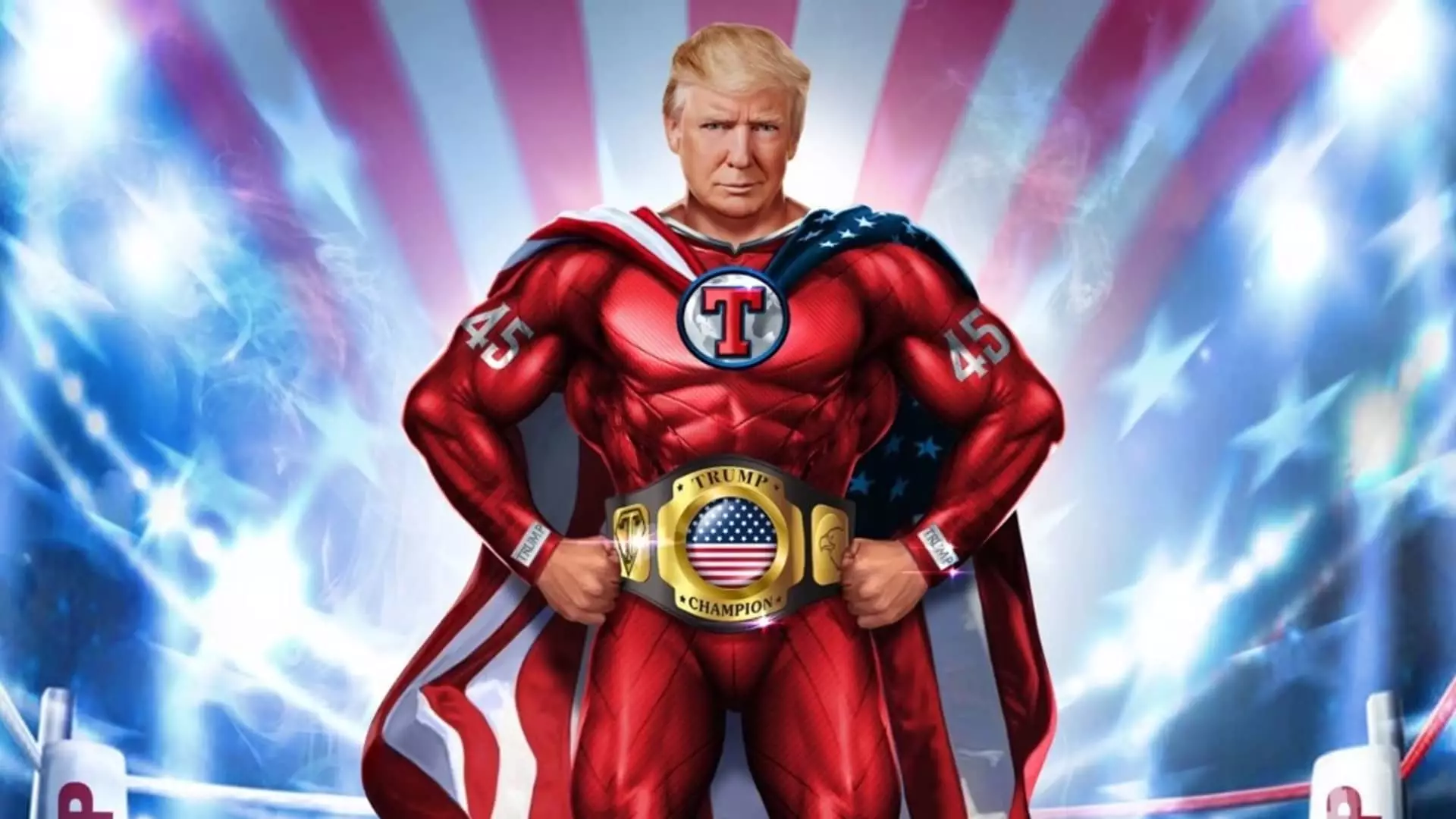In the rapidly evolving landscape of cryptocurrency, the recent announcement of Donald Trump’s new project, World Liberty Financial (WLF), has captured considerable attention. With a looming presidential election and shares of his social media platform experiencing a noteworthy uptick, Trump’s foray into the crypto world comes at a time laden with speculation and skepticism. This exploration raises eyebrows, triggering inquiries about transparency, governance, and the underlying motivations driving this venture.
On an unassuming Tuesday, Trump’s WLF token, WLFI, is set to officially make its debut, positioning itself as an intriguing asset within the diverse crypto sector. This endeavor is not merely a sideline; it is portrayed by Trump as an opportunity for his followers to influence future financial paradigms. However, potential investors are confronted with a perplexing reality. Information surrounding WLF remains vague, with the absence of foundational documents like a white paper or a comprehensive business strategy, leaving many in the dark about the project’s fundamental operations.
Proponents describe WLF as a “crypto bank” intended for borrowing, lending, and investing in various digital currencies. Yet, despite the ambitious rhetoric surrounding this digital financial ecosystem, specifics about the actual mechanisms of engagement and risk remain deliberately underexplored. The project’s roadmap hints at a target of raising $300 million at a staggering $1.5 billion valuation, yet the practicalities of these projections elude clear explanation.
WLF’s relation to Trump Media & Technology Group (TMGT), the parent company of Truth Social, adds another layer of complexity. With TMGT publicly traded under the ticker symbol DJT, its stock performance exemplifies the volatility inherent in speculative investments. After experiences of initial soaring prices, followed by steep declines, DJT’s shares seem to be experiencing a resurgence. That said, with quarterly revenues hovering below $1 million and losses exceeding $16 million, the foundation of this financial ascent is precarious at best.
The structure of WLFI as a Regulation D token offering presents a double-edged sword; while it allows for fundraising without extensive SEC oversight, it simultaneously limits participation primarily to accredited investors. This exclusivity raises questions about who truly stands to benefit from the venture and whether the average investor is being ushered into a highly gated financial landscape.
The fine print surrounding WLFI’s operations reveals ulterior motives for its founders. A significant portion of tokens—20%—is reportedly allocated to the founding team, which includes Trump’s family. This raises critical questions about potential conflicts of interest and whether the project serves primarily as a personal financial instrument for Trump and his associates rather than a genuinely democratized financial solution.
Moreover, the project’s connection to decentralized finance (DeFi) platforms further complicates its evaluation. Collaborations with respected entities like Aave add a veneer of credibility, yet the underlying associations with individuals of questionable reputations provoke concern. Previous complications involving the founders of WLF, including past hacking incidents linked to associated projects, lead to justified caution among potential investors and the broader crypto community.
With ongoing scrutiny, the WLF team continues to offer assurances via social channels, detailing a supposedly clear path toward governance for token holders. However, they stress that ownership of WLFI does not equate to economic rights, leaving would-be backers wondering precisely what influence they would wield.
As the launch of WLFI approaches, the atmosphere is thick with uncertainty. The allure of participating in a new financial frontier runs parallel to the need for diligence and caution. Historical contexts, combined with the lack of clarity surrounding WLF’s operational principles and the dubious backgrounds of its founders, signal that investors should proceed with caution.
The essence of World Liberty Financial serves as a snapshot of a broader dialogue within the crypto sector. It underscores the necessity for transparency, accountability, and a reevaluation of investor rights in a landscape often marked by opacity. As the world watches this unfolding saga, the ramifications of such projects will reverberate far beyond Trump’s immediate endeavors, shaping the discourse on the intersection of politics, finance, and technology.

